If you’re experiencing sore hamstrings, there are a couple of possible causes. One is the routine result of intense exercise, and the other has more serious implications. Read on to learn the differences between both.
What Causes Sore Hamstrings?
The short answer is muscle damage, but the longer one is more complicated.
DOMS (delayed onset muscle soreness)
One of the most common culprits for sore hamstrings is delayed onset muscle soreness. “DOMS is the phenomenon where you finish a workout on day one, but it’s not until day two or three that you feel any pain or soreness associated with that workout,” says Austin Kallai, NASM-certified fitness and group exercise instructor.
The pain you feel from DOMS is the result of micro-tears in the muscle wrought by your workout. “Whenever you challenge yourself in a workout, you’re going to cause microscopic damage to your muscle tissue,” says Trevor Thieme, C.S.C.S., Beachbody’s director of fitness and nutrition content.
And that’s not necessarily a bad thing. “It’s completely normal. And it’s what stimulates the repair and adaptation processes that allow you to build muscle and grow stronger,” he explains. “But when you push yourself too hard or significantly switch up your routine, you can cause enough micro-damage to feel it.”
Which brings us to an important point: Soreness has nothing to do with workout quality or effectiveness. “It just means that you overdid it,” says Thieme. “So while exercise-induced muscle soreness is only a big deal if it inhibits your next workout, it’s also not something to chase or celebrate.”
Bottom line: Despite the prevailing trend of people boasting about how killer leg day was because they couldn’t walk up stairs for two days afterward, building muscle doesn’t have to result in soreness at all. In fact, it shouldn’t.
Strains and pulls
Sore hamstrings could also be the result of a strained or pulled hammy. This typically results in a different type of pain than DOMS, feeling sharp and pointed instead.
Strains and pulls come in different levels of severity.
“A grade 1 strain is minor,” says Kallai. Essentially, the muscle wasn’t warmed up and then was pushed to the upper end of its normal range of motion, or maybe even a tiny bit further, and this caused mild damage to the muscle fibers.
“A grade 3 strain is the most severe, indicating a complete (or almost complete) muscle tear. The muscle may even be separated from the tendon when this happens,” he says.
Sore Hamstrings vs. Pulled Hamstrings
You might be wondering: How do I know the difference between sore hamstrings from DOMS and a muscle pull or strain?
Differences between the two can be determined not only by how each feels, but by when — and how long — the pain persists.
Hamstring soreness due to DOMS will feel tender, tight, and stiff after a workout. Pain typically peaks within 24 to 48 hours, and usually lasts only a few days.
A pulled muscle elicits a more immediate deep, stabbing pain that is often accompanied by noticeable swelling. Depending on its severity, this type of injury can take anywhere from a couple of weeks to several months to heal, and may require medical care.
“A pulled hamstring is a different beast,” says Thieme. “It’s a tear in the muscle tissue that results from overstretching, overuse, or excessive stress, such as trying to lift a weight that’s too heavy, too quickly.”
If you’re experiencing severe and/or debilitating pain, don’t take any chances. Consult a medical professional to get a definitive diagnosis.
How to Treat Sore Hamstrings
Hamstring soreness attributable to DOMS should resolve itself within a day or two. During that time, there’s still plenty you can do to reduce your discomfort.
If your DOMS isn’t severe enough to limit mobility, Kallai recommends getting a massage, sitting in the sauna, doing some light stretching, and engaging in a bit of light, active recovery. “Active recovery is any low-intensity work, such as hiking, easy cycling, or walking on a treadmill with a low incline,” says Kallai. Your goals are to get your blood flowing, ease muscle tension, and speed recovery — all of which can help minimize DOMS.
How Do I Prevent Sore Hamstrings?
If you’re new to strength training, muscle soreness is tough to avoid. “You’re challenging your muscles in ways that they’ve likely never encountered before,” explains Thieme. “Plus, it takes time to get a sense for how hard you need to push yourself to optimize results without getting sore.”
But that doesn’t mean you’re doomed to constant hobbling and chronic discomfort. Follow these tips to reduce the severity of exercise-induced muscle soreness — and perhaps even prevent it from occurring in the first place.
1. Warm up dynamically
“Never skip your warm-up,” Thieme says. “Performing dynamic stretches before you exercise primes your muscles for action, boosting workout performance and reducing your risk of experiencing severe soreness and injury.”
Here are two dynamic warm-up exercises that specifically target your hamstrings. Incorporate these into your existing warm-up to ensure you’re ready for your workout and to mitigate soreness.
Hinges
- Stand with your feet about hip-width apart, feet parallel, with your hands on your hips. This is the starting position.
- Keeping your back flat and core engaged, push your hips back and hinge forward until you feel a slight stretch in your hamstrings.
- Pause, and then return to the starting position.
Four-point hamstring curl
- Assume a cat/cow position, with your knees under your hips and your hands under your shoulders. This is the starting position.
- Extend your right leg straight behind you.
- Bend your right knee, squeezing your heel toward your glutes.
- Pause, and return to the starting position.
- Perform equal reps on both legs.
2. Avoid overtraining
“It’s important to challenge yourself every workout, but not to excess,” Thieme says. “If you can’t complete all of your reps and sets with good form, you’re lifting too much.”
Also, if you can’t walk the day after a workout due to DOMS, think about decreasing your reps or weights for next time.
3. Cool down with stretches
Complement your workout with cooldown exercises that lower your heart rate and stretch out tired muscles. Although research shows that stretching likely doesn’t help with muscle soreness after a workout, it can ease tension and thereby reduce the risk of pulls and strains.
Standing forward fold
- Stand with your feet hip-width apart and your arms at your sides.
- Keeping your back flat, hinge forward at your hips and fold your torso over your legs.
- Hold for up to 30 seconds and slowly return to the starting position.
4. Foam roll
While stretching doesn’t help relieve muscle soreness, research has found that foam rolling after a tough workout can. Foam rolling increases blood flow, which can reduce exercise-induced discomfort.
- Sit on the floor with your legs straight and a foam roller under your thighs. Place your hands on the floor on either side of your butt.
- Lift your butt and use your hands to roll the entire length of your hamstrings — from just below your glutes to your knees — with the roller.
For a deeper roll, cross one leg over the other, rolling a single leg at a time.
The post 2 Reasons You Have Sore Hamstrings — and What to Do About It appeared first on The Beachbody Blog.

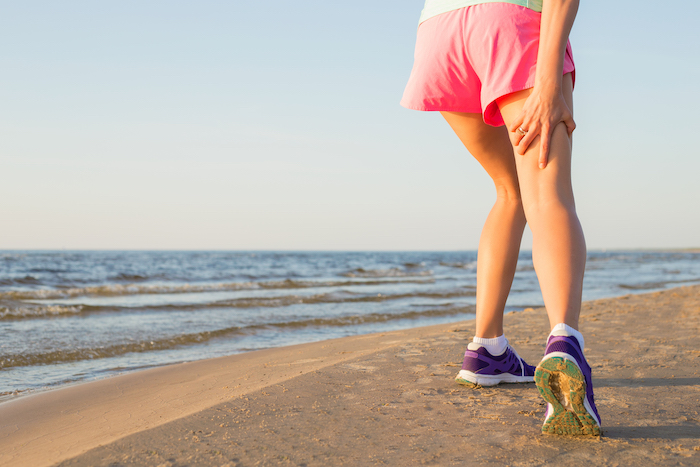
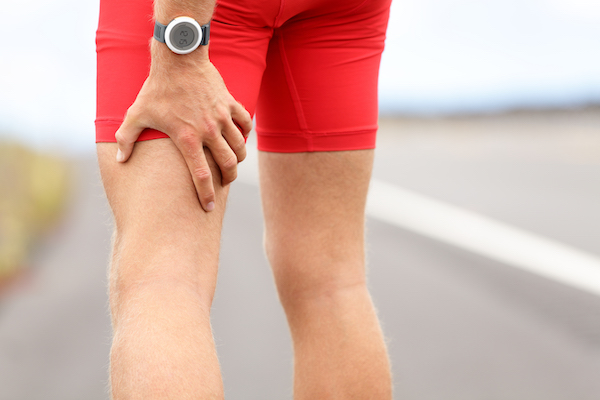
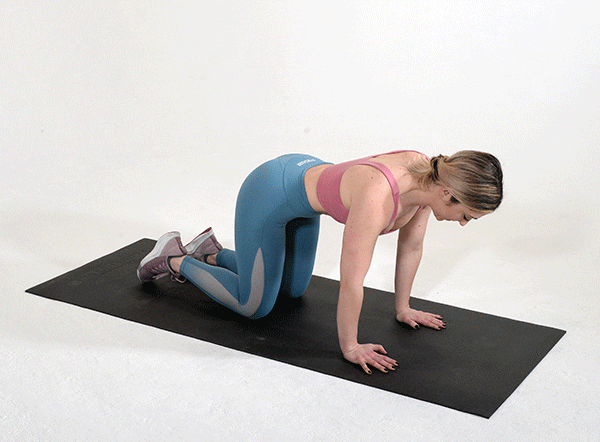
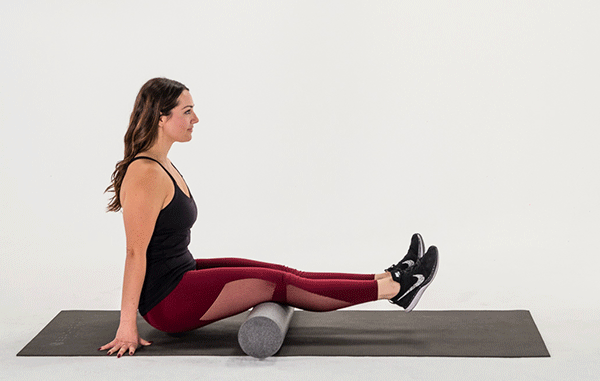
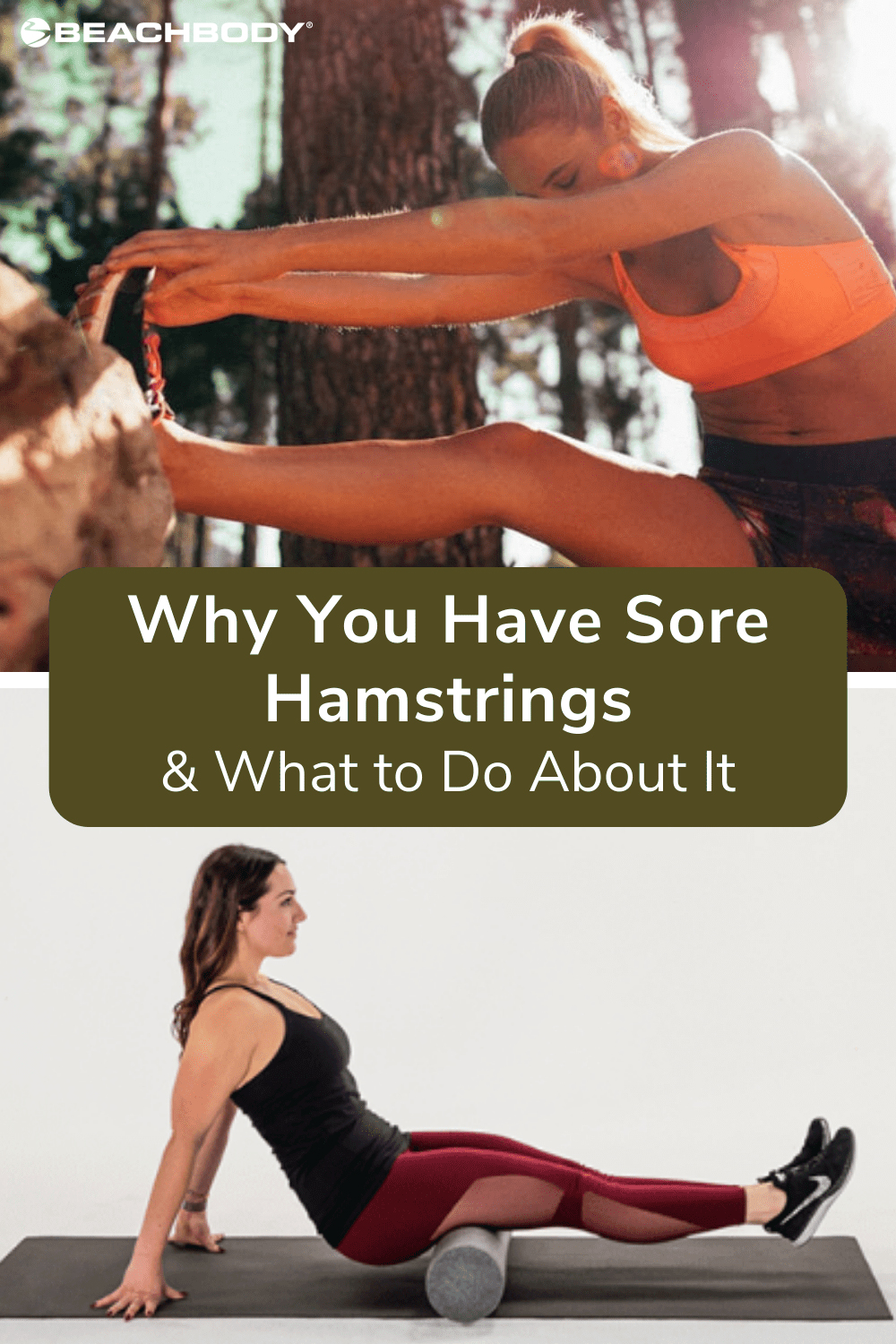
0 Comments